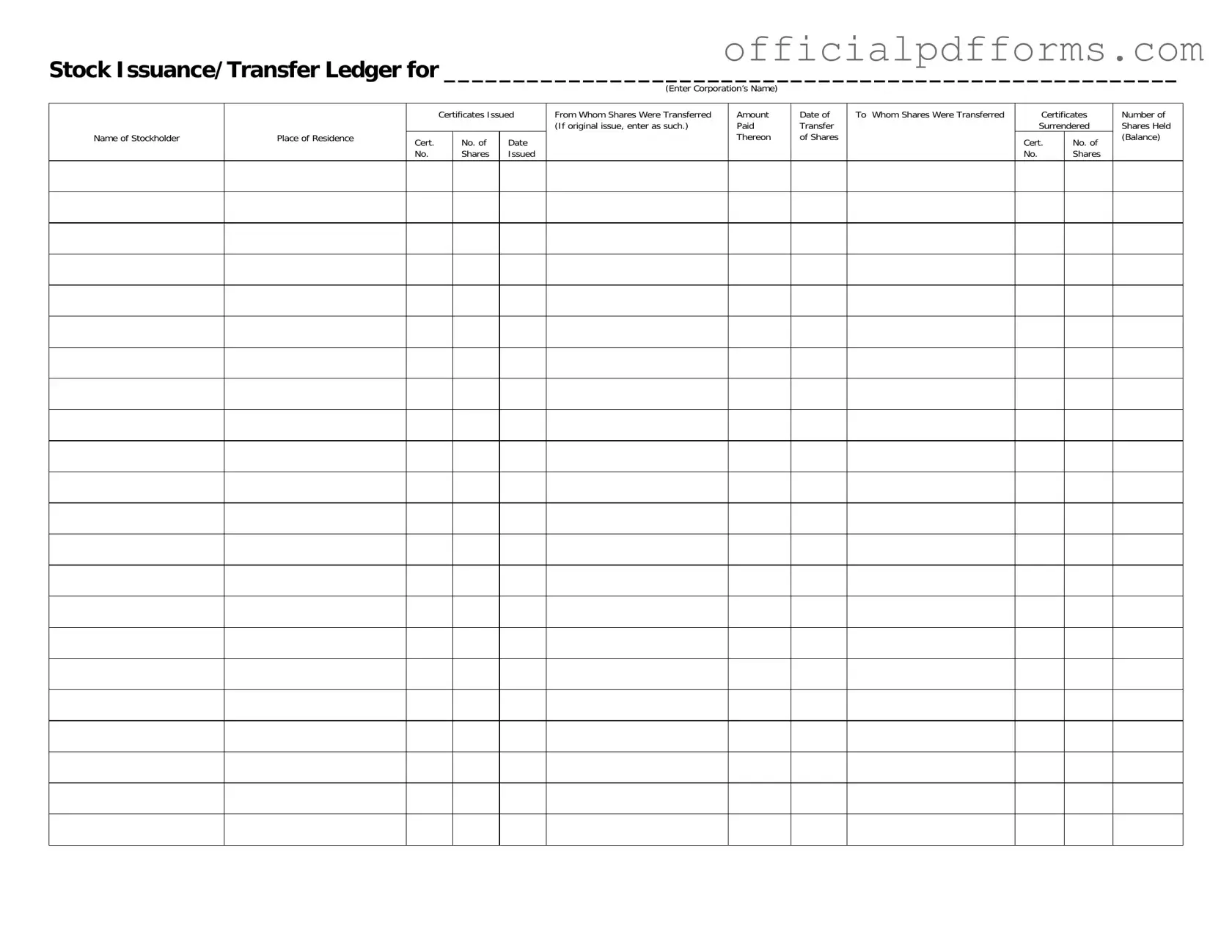Fill in a Valid Stock Transfer Ledger Form
The Stock Transfer Ledger form is a vital document used to record the issuance and transfer of stock within a corporation. It captures essential details such as the stockholder's name, place of residence, certificates issued, and the number of shares transferred. Completing this form accurately ensures proper tracking of stock ownership and facilitates compliance with corporate regulations.
To fill out the Stock Transfer Ledger form, please click the button below.
Access Form Online
